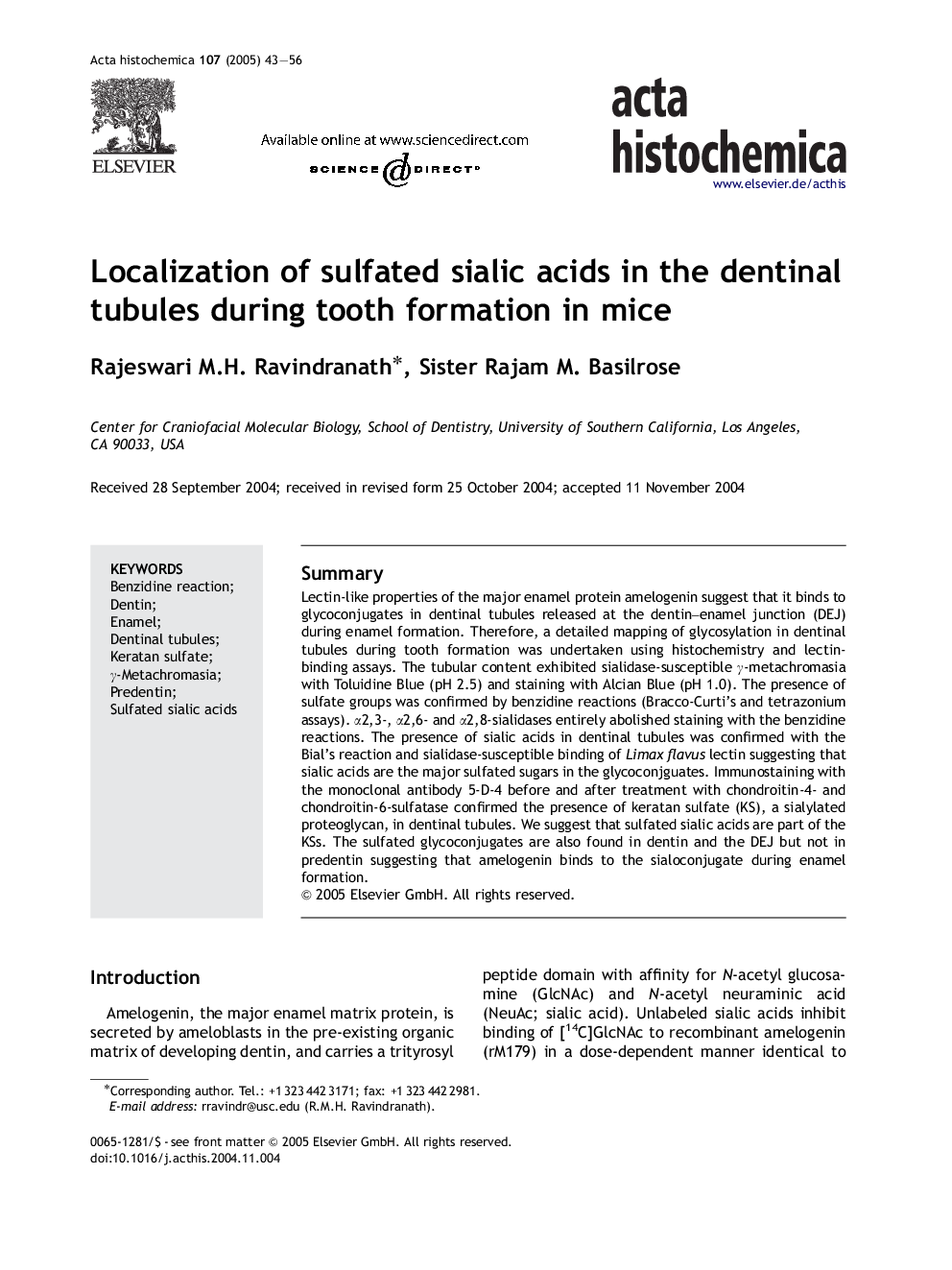| Article ID | Journal | Published Year | Pages | File Type |
|---|---|---|---|---|
| 10747427 | Acta Histochemica | 2005 | 14 Pages |
Abstract
Lectin-like properties of the major enamel protein amelogenin suggest that it binds to glycoconjugates in dentinal tubules released at the dentin-enamel junction (DEJ) during enamel formation. Therefore, a detailed mapping of glycosylation in dentinal tubules during tooth formation was undertaken using histochemistry and lectin-binding assays. The tubular content exhibited sialidase-susceptible γ-metachromasia with Toluidine Blue (pH 2.5) and staining with Alcian Blue (pH 1.0). The presence of sulfate groups was confirmed by benzidine reactions (Bracco-Curti's and tetrazonium assays). α2,3-, α2,6- and α2,8-sialidases entirely abolished staining with the benzidine reactions. The presence of sialic acids in dentinal tubules was confirmed with the Bial's reaction and sialidase-susceptible binding of Limax flavus lectin suggesting that sialic acids are the major sulfated sugars in the glycoconjguates. Immunostaining with the monoclonal antibody 5-D-4 before and after treatment with chondroitin-4- and chondroitin-6-sulfatase confirmed the presence of keratan sulfate (KS), a sialylated proteoglycan, in dentinal tubules. We suggest that sulfated sialic acids are part of the KSs. The sulfated glycoconjugates are also found in dentin and the DEJ but not in predentin suggesting that amelogenin binds to the sialoconjugate during enamel formation.
Related Topics
Life Sciences
Biochemistry, Genetics and Molecular Biology
Biochemistry
Authors
Rajeswari M.H. Ravindranath, Sister Rajam M. Basilrose,
